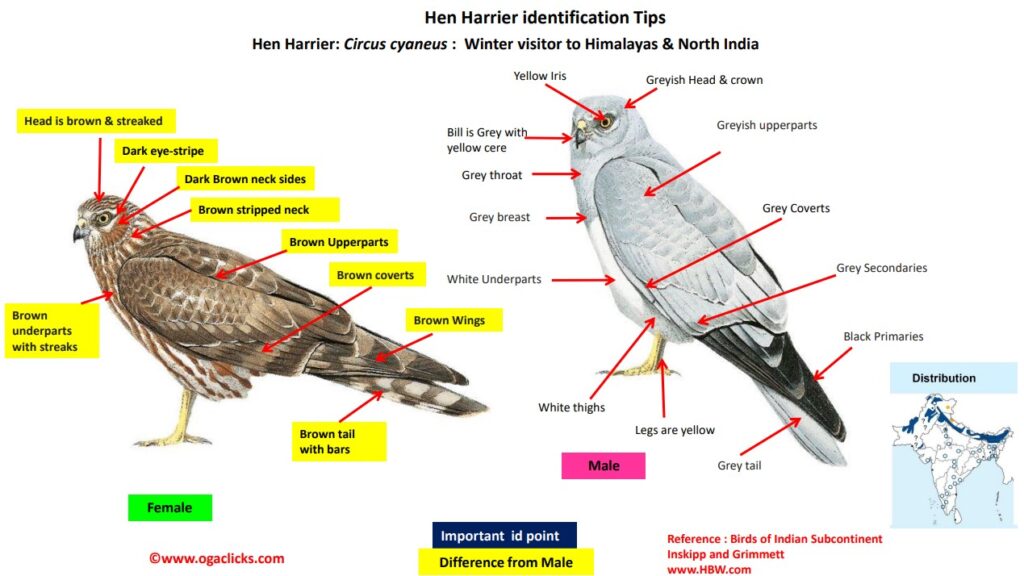
Hen Harrier Circus cyaneus
Etymology:
- Circus: Greek word kirkos –partly mythical hawk, named for its circling flight (kirkos –circle).
- Cyaneus : Latin word for Dark blue
Distribution in India: Winter visitor in Himalayas, North ,South & North East India.
Description: Size 42–50 cm; Weight of male 300–400 g, Weight of female 370–708 g; wingspan of 100–121 cm. It is a larger and broader-winged Harrier. The male mostly uniformly greyishish with white rump, dark grey band along trailing edge of secondaries and blackish primaries. The female is larger and heavier than male; dark brown above, pale below with dark streaks; from below in flight, dark bands on primaries, secondaries and rectrices. The cere is yellow & Irides orange-yellow in adult male, yellow in adult female, legs and feet yellow. The juvenile is very similar to female, but slightly darker above and more rufous below, pale brown to yellow irides in juvenile; greenish-yellow cere.
Habitat: It is found in open country with some grass or shrub cover, grassland, steppe, meadows, moorland, scrub and cultivation, also in wetlands and young conifer plantations. It is found, up to 2500 m. Commonly perches on ground, but also on poles, trees or rocks; sleeps on ground. In non-breeding season often gathers in numbers at roosts.
Food habits: It eats vertebrates, voles, mice and ground squirrels up to size of young rabbits and hares; also takes birds of open habitats like wetlands and grasslands like larks, and ducks, reptiles, amphibians, bird eggs and, especially in winter, carrion. It is normally slow, low foraging flight, relying heavily on hearing prey, which is mainly captured on ground; occasionally takes birds in flight. It generally hunts alone; may travel some distance from nest or roost, outside breeding season.
Breeding habits: They breed Apr to Jul. The male are polygamas, with 2 or 3 females per breeding male. They nest on ground, in dense grass or scrub, crops or marshy vegetation. The nest is a pile of small sticks and grass, built by female. The clutch size is 3–6 eggs, laid at intervals of 1–3 days. The incubation period is 29–31 days done by female. The chicks are brooded continuously at first, with only male bringing food; female also hunts later, but generally closer to nest. The chicks have buffy white first down, buffy brown second down. The fledging period is 32–42 days. Some birds live 12 years or more in wild; oldest recorded bird 16 years.